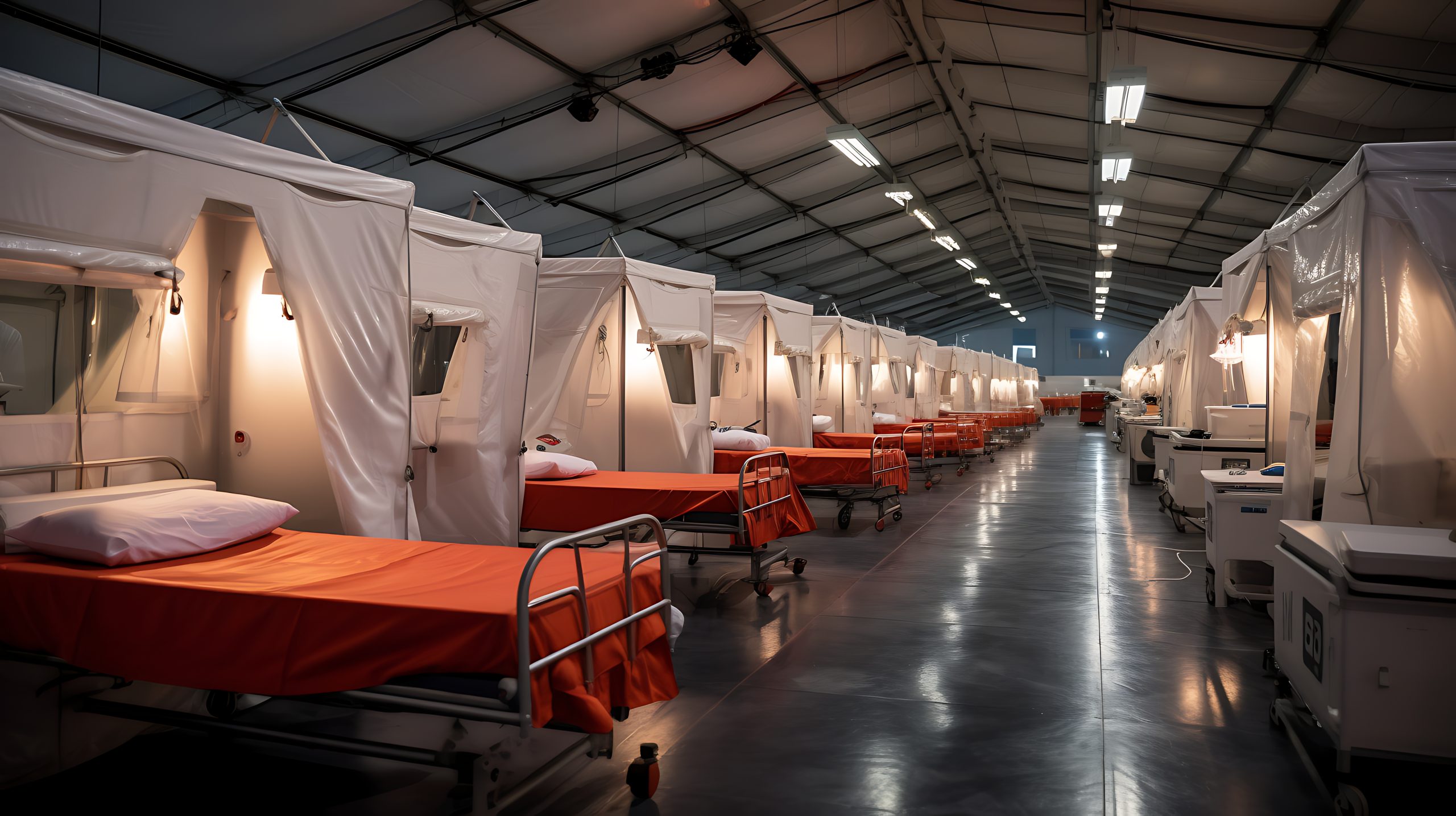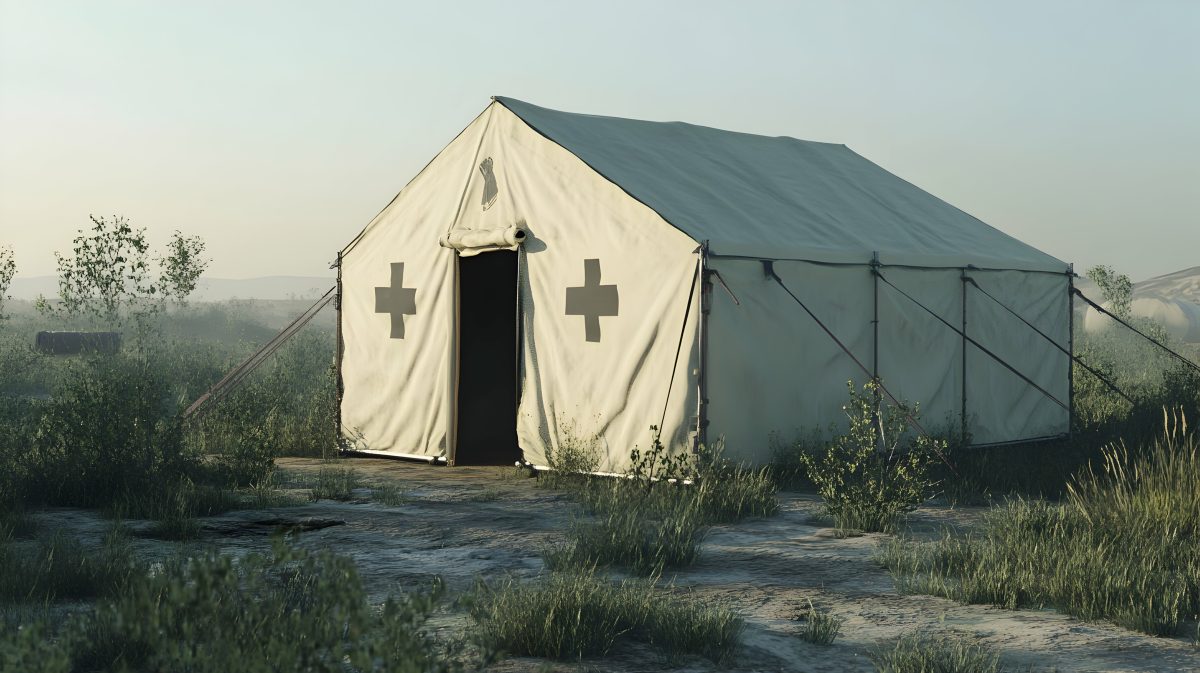When disaster strikes in the harshest corners of the world, medical professionals face a dual challenge: treating patients while battling extreme environmental conditions.
Climate-controlled field hospitals have emerged as critical innovations in humanitarian response, military operations, and disaster relief efforts. These sophisticated temporary facilities enable healthcare delivery in environments where temperatures soar above 120°F or plummet below freezing, where sandstorms rage, or where monsoon rains threaten to wash away conventional tents.
This capability to maintain stable internal environments despite external chaos doesn’t just provide comfort. It saves lives by creating the controlled conditions necessary for successful medical interventions.
The Evolution of Field Hospital Climate Control
Field hospitals have come a long way from the canvas tents of earlier centuries. Today’s climate-controlled field hospitals represent the culmination of decades of technological advancement and lessons learned from deployments in diverse environmental extremes.
The modern evolution began during the Cold War, when military medical units needed facilities that could function in arctic conditions or desert heat. Early systems relied on rudimentary heating or cooling units that consumed enormous amounts of fuel and provided inconsistent results.
The Gulf War era witnessed significant advances with the introduction of more efficient portable HVAC systems. However, the real revolution came in the early 2000s with the development of integrated environmental control units (ECUs) specifically designed for medical facilities. These systems combined heating, cooling, air filtration, and humidity control in compact, ruggedized packages that could be rapidly deployed alongside field hospital structures.
Recent innovations have focused on energy efficiency, reduced logistical footprints, and smart systems that automatically adjust to changing conditions. Modern field hospitals can maintain precise temperature zones for different medical functions—cooler areas for medication storage, standard comfort zones for patient recovery, and precisely controlled environments for operating theaters.
When equipping medical facilities for field operations, sourcing environmental control units from reputable manufacturers is essential to ensure the robust, reliable performance required in critical care settings. Quality ECUs not only withstand harsh deployment conditions but also deliver the precise climate management necessary for patient care and medical supply preservation in any environment.
Engineering Challenges in Extreme Environments
Creating a stable medical environment in extreme conditions presents formidable engineering challenges.
Desert deployments must contend with temperature swings exceeding 50°F between day and night, while arctic installations face brutal cold that can freeze medical fluids and compromise equipment. High humidity environments breed mold and bacteria that threaten sterile conditions, while high-altitude locations deal with thin air that affects both patients and cooling system efficiency.
Engineers have developed multi-layered solutions to these challenges. Advanced insulation materials with reflective properties help reduce heat transfer, while specialized sealing systems prevent dust infiltration in desert environments. Some systems incorporate redundant power sources—combining generator power with solar arrays or battery storage to ensure uninterrupted climate control even if primary systems fail.
Water management represents another critical challenge. In humid environments, dehumidification systems collect and process water to prevent mold growth. In desert deployments, some advanced systems can actually harvest atmospheric moisture, supplementing water supplies for both cooling systems and medical needs. Arctic deployments often incorporate heat recovery systems that capture and redistribute waste heat from generators and equipment to maximize efficiency in extreme cold.
Medical Necessity: Why Climate Control Saves Lives
Climate control in field hospitals isn’t merely about comfort—it’s a medical necessity that directly impacts patient outcomes.
Maintaining appropriate temperature ranges significantly reduces complications in trauma patients by helping stabilize core body temperature. Hypothermia, a common complication in trauma cases even in warm environments, increases mortality rates by disrupting blood clotting mechanisms and cellular functions.
Precise temperature control is also essential for medication stability. Many antibiotics, blood products, and vaccines require specific temperature ranges to maintain efficacy. Modern climate-controlled field hospitals incorporate dedicated cooling zones for pharmacy operations, ensuring that life-saving medications remain viable despite external conditions.
Infection control represents another critical function of environmental systems. HEPA filtration and positive pressure ventilation in surgical areas reduce airborne pathogens, while controlling humidity levels prevents both bacterial growth in high-humidity environments and excessive dryness that can compromise respiratory patients in arid conditions.

Current Deployment Models and Capabilities
Today’s climate-controlled field hospitals generally fall into three deployment models, each balancing response time against capability.
Rapid-deployment units can be operational within hours but offer more limited climate control capabilities—typically focusing on maintaining basic temperature ranges within larger treatment spaces. These systems commonly use inflatable structures with integrated ECUs designed for minimal setup time.
Mid-range systems, deployable within 24-48 hours, offer more sophisticated zoning capabilities and better stability. These often utilize rigid-walled expandable shelters with dedicated environmental control for critical areas like operating rooms and intensive care units. The most advanced installations, while requiring several days to establish, create hospital-grade environments with precise control over temperature, humidity, air exchange rates, and filtration comparable to permanent facilities.
Recent deployments in natural disaster zones have showcased systems capable of maintaining 68-75°F internally while external temperatures exceeded 110°F. Advanced military field hospitals have demonstrated the ability to maintain sterile operating environments in dust storms and monsoon conditions alike. The latest generation of systems can adapt to changing needs, allowing operators to quickly reconfigure spaces while maintaining appropriate conditions throughout.
Future Directions and Innovations
The future of climate-controlled field hospitals lies in greater autonomy, sustainability, and adaptation. Emerging technologies include environmental systems controlled by artificial intelligence (AI) that anticipate needs based on weather forecasts, patient loads, and operational patterns. These smart systems optimize energy use while maintaining ideal conditions, extending operational duration with limited resources.
Material science is delivering new building components with dynamic thermal properties that passively respond to external conditions, reducing energy requirements. Some experimental systems incorporate phase-change materials that absorb heat during hot days and release it during cold nights, naturally moderating temperature extremes.
Sustainability innovations are reducing the environmental footprint of these facilities. New hybrid power systems combine traditional generators with renewable energy and advanced storage, while water recycling systems drastically cut consumption in water-scarce environments. Some forward-looking designs incorporate atmospheric water generation technology that literally produces water from air in humid environments.
Conclusion
Climate-controlled field hospitals represent one of humanity’s most remarkable achievements in delivering healthcare under impossible conditions. These technological marvels enable skilled medical professionals to save lives in environments that would otherwise render medical care impractical or impossible. As climate change increases the frequency and severity of extreme weather events, these systems will become even more crucial to disaster response worldwide.
